Nail Fungus Prevention: Effective Strategies for Avoiding Recurrent Infections
How can you prevent nail fungus from recurring. What are the most effective strategies for maintaining healthy nails. Is it possible to completely eliminate the risk of nail fungus infections. What role does proper foot hygiene play in preventing fungal nail infections. How do lifestyle factors contribute to nail fungus prevention.
Understanding Nail Fungus: Symptoms and Causes
Nail fungus, medically known as onychomycosis, is a common condition that affects millions of people worldwide. It occurs when fungi infect one or more nails, leading to various symptoms and potential complications if left untreated.
Common Symptoms of Nail Fungus
- Thickened nails
- Discoloration (often yellow, brown, or white)
- Brittle or crumbly texture
- Distorted nail shape
- Foul odor
- Separation of the nail from the nail bed (onycholysis)
Nail fungus can affect both fingernails and toenails, but it’s more common in toenails due to the warm, moist environment often created by shoes and socks. The infection typically starts at the edge of the nail and gradually spreads deeper, causing more severe symptoms over time.
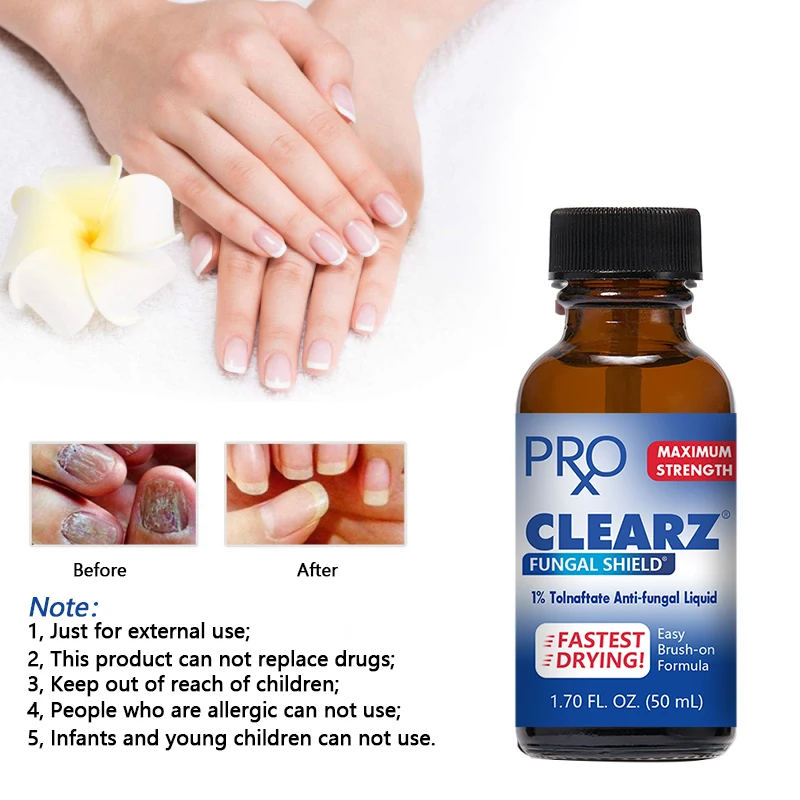
Causes and Risk Factors
Fungal nail infections are primarily caused by dermatophytes, a group of fungi that thrive on keratin, the protein found in nails and skin. However, yeasts and molds can also be responsible for some cases. Several factors increase the risk of developing nail fungus:
- Age (more common in older adults)
- Reduced blood circulation
- Weakened immune system
- Excessive sweating
- Walking barefoot in damp public areas
- Tight shoes that don’t allow proper ventilation
- Minor skin or nail injuries
- Certain medical conditions (e.g., diabetes, psoriasis)
Understanding these risk factors is crucial for developing effective prevention strategies. By addressing these underlying causes, individuals can significantly reduce their chances of developing or experiencing recurrent nail fungus infections.
Twelve Proven Strategies for Preventing Nail Fungus Recurrence
Preventing nail fungus recurrence requires a multifaceted approach that addresses various aspects of personal hygiene, lifestyle, and nail care. Here are twelve effective strategies to keep your nails healthy and fungus-free:

1. Maintain Proper Foot Hygiene
Proper foot hygiene is the cornerstone of nail fungus prevention. How often should you wash your feet? Ideally, wash your feet daily with soap and water, paying special attention to the areas between your toes. After washing, dry your feet thoroughly, especially between the toes, as moisture creates an ideal environment for fungal growth.
2. Keep Nails Trimmed and Clean
Regular nail maintenance is crucial for preventing fungal infections. Trim your nails straight across and file down thickened areas. Clean under your nails gently with a soft brush or nail cleaner. Avoid cutting your nails too short, as this can lead to injuries that provide entry points for fungi.
3. Choose Breathable Footwear
The type of shoes you wear plays a significant role in nail fungus prevention. Opt for shoes made from breathable materials like leather or mesh that allow air circulation. Avoid tight-fitting shoes that can create a warm, moist environment conducive to fungal growth. Alternate between different pairs of shoes to allow them to dry completely between uses.
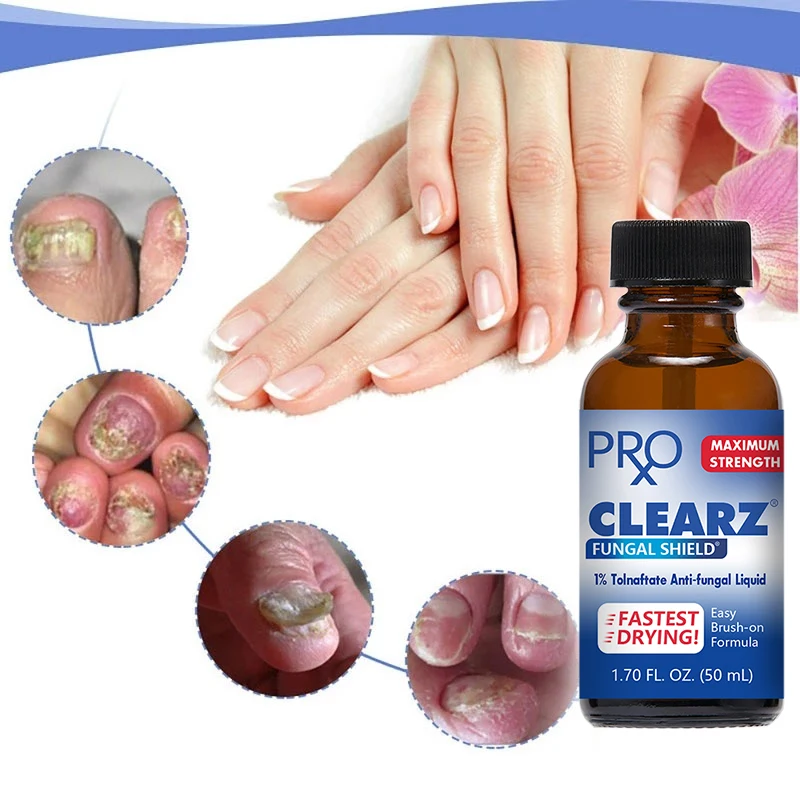
4. Use Antifungal Powders or Sprays
Antifungal powders and sprays can provide an extra layer of protection against nail fungus. Apply these products to your feet and the inside of your shoes regularly. They help absorb moisture and create an inhospitable environment for fungi. Some effective options include:
- Tolnaftate powder
- Miconazole spray
- Tea tree oil-based products
Always follow the manufacturer’s instructions for optimal results.
5. Wear Moisture-Wicking Socks
The right socks can make a significant difference in preventing nail fungus. Choose moisture-wicking socks made from materials like merino wool, bamboo, or specialized synthetic fibers. These fabrics draw sweat away from your skin, keeping your feet dry and reducing the risk of fungal growth. Change your socks daily, or more frequently if your feet tend to sweat excessively.
The Role of Proper Nail Care in Fungus Prevention
Maintaining healthy nails through proper care is essential for preventing fungal infections. Here are some key aspects of nail care that can help keep fungi at bay:
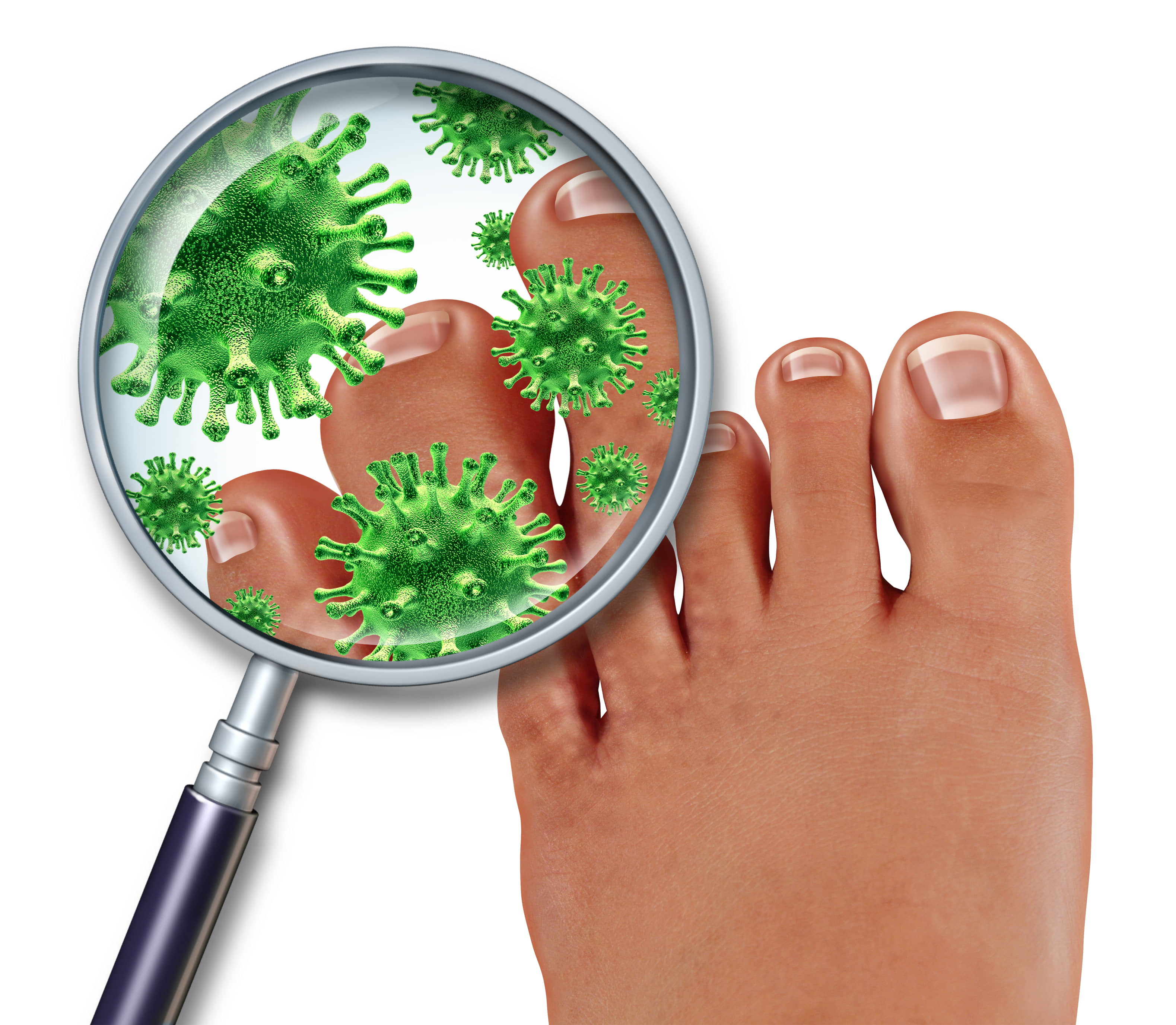
6. Avoid Sharing Nail Care Tools
Fungal infections can spread through shared nail care tools. Why is it important to have your own nail care kit? Using your own nail clippers, files, and other tools reduces the risk of cross-contamination. If you visit a nail salon, ensure they sterilize their tools between clients or bring your own set.
7. Use a Nail Hardener
Strengthening your nails can make them more resistant to fungal infections. Apply a nail hardener containing ingredients like calcium, protein, or keratin to help fortify your nails. However, avoid using nail polish on infected nails, as this can trap moisture and exacerbate the problem.
8. Be Cautious with Artificial Nails
While artificial nails can be aesthetically pleasing, they can also increase the risk of fungal infections. If you choose to wear artificial nails, ensure they’re applied properly and maintain good hygiene. Remove them periodically to allow your natural nails to breathe and check for any signs of infection.

Lifestyle Factors That Influence Nail Fungus Prevention
Your daily habits and overall health can significantly impact your susceptibility to nail fungus. Consider these lifestyle factors in your prevention strategy:
9. Maintain a Healthy Diet
A balanced diet rich in nutrients supports overall nail health and immune function. Include foods high in:
- Biotin (eggs, nuts, whole grains)
- Omega-3 fatty acids (fish, flaxseed)
- Protein (lean meats, legumes)
- Zinc (oysters, beef, pumpkin seeds)
- Vitamin E (almonds, sunflower seeds)
These nutrients contribute to stronger nails and a more robust immune system, making it harder for fungi to take hold.
10. Stay Hydrated
Proper hydration is crucial for overall health, including nail health. Drinking adequate water helps flush toxins from your body and keeps your nails hydrated from the inside out. Aim for at least 8 glasses of water per day, adjusting based on your activity level and climate.
11. Manage Underlying Health Conditions
Certain medical conditions, such as diabetes and circulatory disorders, can increase your risk of nail fungus. Work closely with your healthcare provider to manage these conditions effectively. Good blood sugar control and improved circulation can significantly reduce your susceptibility to fungal infections.
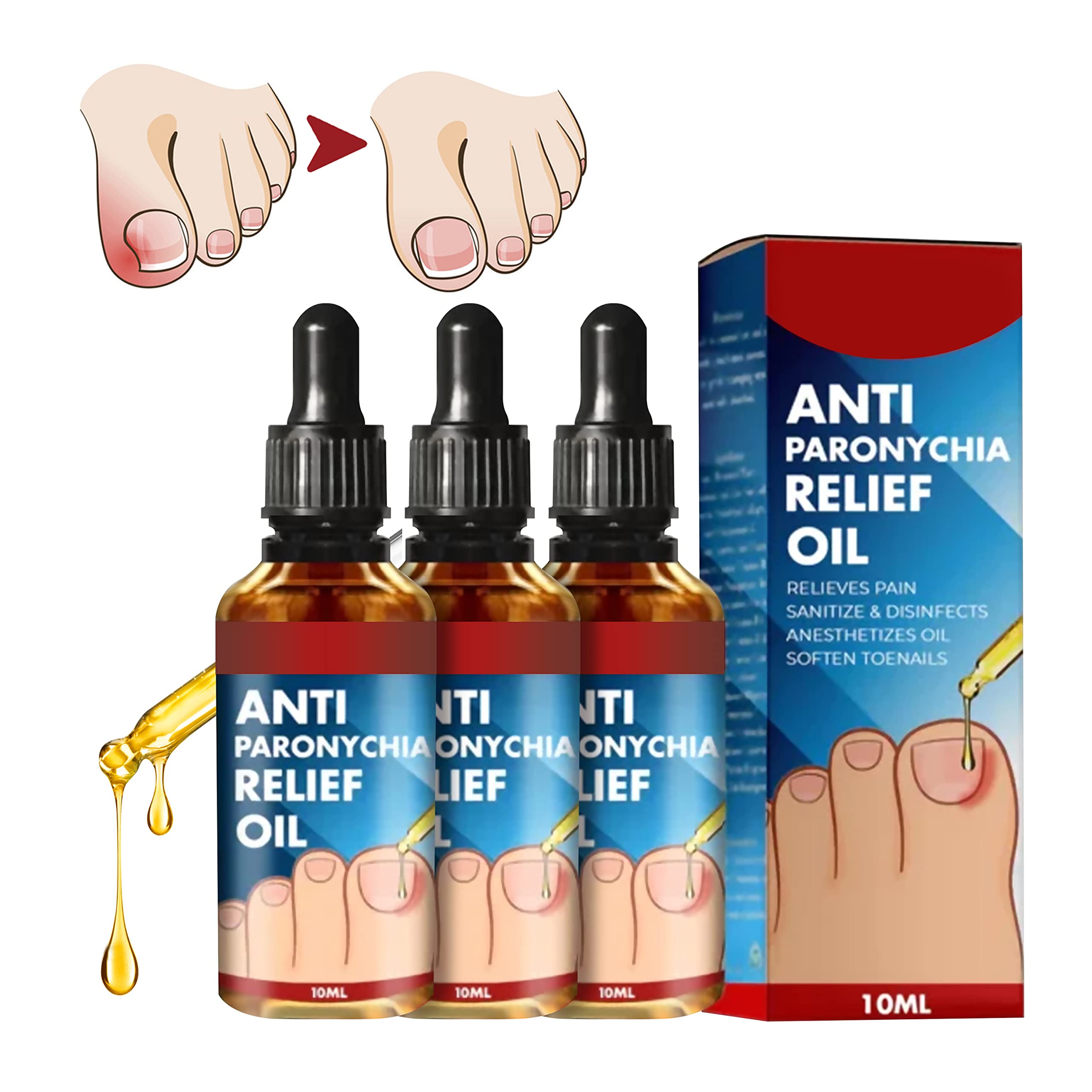
Advanced Prevention Techniques for High-Risk Individuals
For those who are particularly prone to nail fungus or have experienced recurrent infections, additional prevention measures may be necessary:
12. Consider Prophylactic Antifungal Treatments
In some cases, healthcare providers may recommend prophylactic antifungal treatments to prevent recurrence. These can include:
- Topical antifungal solutions applied regularly to the nails
- Oral antifungal medications taken on a periodic basis
- Medicated nail lacquers that provide long-lasting protection
Always consult with a healthcare professional before starting any preventive medication regimen, as these treatments may have potential side effects and interactions.
The Importance of Early Detection and Treatment
While prevention is key, early detection and prompt treatment of nail fungus are crucial for minimizing its impact and preventing spread. Regular self-examination of your nails can help you spot potential issues early on.
Signs to Watch For
Be vigilant for the following signs that may indicate a developing fungal infection:
- Changes in nail color or texture
- Thickening or distortion of the nail plate
- Separation of the nail from the nail bed
- Accumulation of debris under the nail
- Brittle or crumbly nails
If you notice any of these symptoms, consult a healthcare provider or dermatologist for a proper diagnosis and treatment plan.

Innovative Technologies in Nail Fungus Prevention
As research in nail health continues to advance, new technologies are emerging to help prevent and treat fungal infections. Some promising innovations include:
UV Light Sterilization
UV light sterilization devices designed for shoes and nail care tools can help eliminate fungi and other microorganisms. These devices use ultraviolet light to kill pathogens, reducing the risk of reinfection from contaminated items.
Nanoparticle-Based Treatments
Researchers are developing nanoparticle-based antifungal treatments that can penetrate the nail more effectively than traditional topical medications. These innovative formulations may provide longer-lasting protection against fungal infections.
Smart Moisture-Sensing Socks
Emerging textile technologies include socks with built-in moisture sensors that can alert wearers when their feet become too damp, prompting them to change socks or shoes to maintain a dry environment.
The Role of Professional Care in Nail Fungus Prevention
While many prevention strategies can be implemented at home, professional care plays a vital role in maintaining nail health and preventing fungal infections.
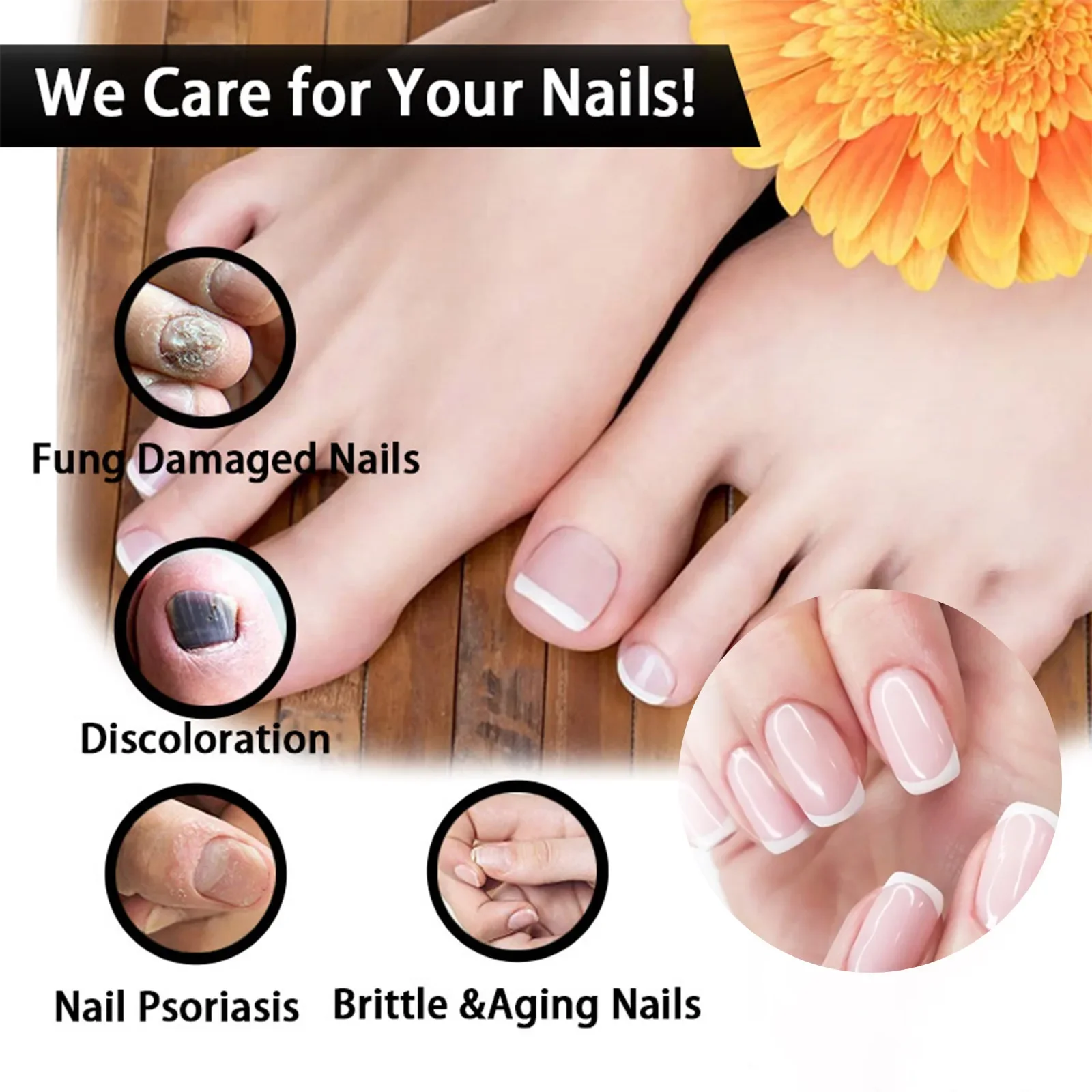
Regular Podiatric Check-ups
For individuals at high risk of nail fungus, regular visits to a podiatrist can be beneficial. These specialists can:
- Assess overall foot and nail health
- Provide professional nail care and maintenance
- Recommend personalized prevention strategies
- Detect and treat early signs of infection
How often should you see a podiatrist for nail health? The frequency of visits depends on your individual risk factors and history of infections. Some people may benefit from quarterly check-ups, while others may only need annual visits.
Professional Nail Care Services
If you enjoy getting manicures or pedicures, choosing a reputable salon with high hygiene standards is crucial. Look for salons that:
- Sterilize tools between clients
- Use disposable items when possible
- Maintain a clean and sanitized environment
- Have licensed technicians trained in proper nail care
Don’t hesitate to ask about their sanitation practices before booking an appointment.
Integrating Nail Fungus Prevention into Your Daily Routine
Effective nail fungus prevention requires consistency and integration into your daily life. Here are some tips for making prevention a habit:

Create a Nail Care Schedule
Establish a regular schedule for nail trimming, cleaning, and inspection. This could be weekly or bi-weekly, depending on your needs. Set reminders on your phone or calendar to ensure you don’t forget.
Incorporate Foot Care into Your Shower Routine
Make foot washing and drying a non-negotiable part of your daily shower routine. Keep a soft brush and clean towel dedicated to foot care in your bathroom.
Prepare Your Gym Bag
If you frequent public pools, gyms, or locker rooms, pack flip-flops or water shoes to avoid walking barefoot. Include a clean pair of socks and antifungal powder in your gym bag for post-workout foot care.
Rotate Your Footwear
Develop a system for rotating your shoes to ensure each pair has ample time to dry between uses. Consider using shoe trees or stuffing shoes with newspaper to absorb moisture and maintain shape.
By implementing these strategies and making nail fungus prevention a priority, you can significantly reduce your risk of infection and maintain healthy, attractive nails. Remember that consistency is key, and even small daily habits can make a big difference in your nail health over time.

Twelve ways to prevent another nail infection
Diseases & conditions
-
Coronavirus Resource Center
-
Acne
-
Eczema
-
Hair loss
-
Psoriasis
-
Rosacea
-
Skin cancer
-
A to Z diseases
-
A to Z videos
- DIY acne treatment
- How dermatologists treat
- Skin care: Acne-prone skin
- Causes
- Is it really acne?
- Types & treatments
- Childhood eczema
- Adult eczema
- Insider secrets
- Types of hair loss
- Treatment for hair loss
- Causes of hair loss
- Hair care matters
- Insider secrets
- What is psoriasis
- Diagnosis & treatment
- Skin, hair & nail care
- Triggers
- Insider secrets
- What is rosacea
- Treatment
- Skin care & triggers
- Insider secrets
- Types and treatment
- Find skin cancer
- Prevent skin cancer
- Raise awareness
- Español
Featured
How Natalie cleared her adult acne
Natalie tried many acne products without success. Find out how a board-certified dermatologist helped Natalie see clear skin before her wedding.
Find out how a board-certified dermatologist helped Natalie see clear skin before her wedding.
JAK inhibitors: A newer type of medication
JAK inhibitors are helping patients with alopecia areata, eczema/atopic dermatitis, psoriasis, and vitiligo. Here’s what you need to know.
Everyday care
-
Skin care basics
-
Skin care secrets
-
Injured skin
-
Itchy skin
-
Sun protection
-
Hair & scalp care
-
Nail care secrets
- Basic skin care
- Dry, oily skin
- Hair removal
- Tattoos and piercings
- Anti-aging skin care
- For your face
- For your skin routine
- Preventing skin problems
- Bites & stings
- Burns, cuts, & other wounds
- Itch relief
- Poison ivy, oak & sumac
- Rashes
- Shade, clothing, and sunscreen
- Sun damage and your skin
- Aprenda a proteger su piel del sol
- Your hair
- Your scalp
- Nail care basics
- Manicures & pedicures
Featured
Practice Safe Sun
Everyone’s at risk for skin cancer. These dermatologists’ tips tell you how to protect your skin.
These dermatologists’ tips tell you how to protect your skin.
Relieve uncontrollably itchy skin
Find out what may be causing the itch and what can bring relief.
Darker Skin Tones
-
Skin care secrets
-
Hair care
-
Hair loss
-
Diseases & Conditions
- Acne
- Dark spots
- Dry skin
- Light spots
- Razor bumps
- Caring for Black hair
- Scalp psoriasis
- Weaves & extensions
- Central centrifugal cicatricial alopecia
- Frontal fibrosing alopecia
- Hairstyles that pull can cause hair loss
- Acanthosis nigricans
- Acne keloidalis nuchae
- Hidradenitis suppurativa
- Keloid scars
- Lupus and your skin
- Sarcoidosis and your skin
- Skin cancer
- Vitiligo
- More diseases & conditions
Featured
Fade dark spots
Find out why dark spots appear and what can fade them.
Untreatable razor bumps or acne?
If you have what feels like razor bumps or acne on the back of your neck or scalp, you may have acne keloidalis nuchae. Find out what can help.
Cosmetic treatments
-
Your safety
-
Age spots & dark marks
-
Cellulite & fat removal
-
Hair removal
-
Scars & stretch marks
-
Wrinkles
-
Younger-looking skin
Featured
Laser hair removal
You can expect permanent results in all but one area. Do you know which one?
Do you know which one?
Scar treatment
If you want to diminish a noticeable scar, know these 10 things before having laser treatment.
Botox
It can smooth out deep wrinkles and lines, but the results aren’t permanent. Here’s how long botox tends to last.
Public health programs
-
Skin cancer awareness
-
Free skin cancer screenings
-
Kids’ camp
-
Good Skin Knowledge
-
Shade Structure grants
-
Skin Cancer, Take a Hike!™
-
Awareness campaigns
-
Flyers & posters
-
Get involved
- Lesson plans and activities
- Community grants
Featured
Free materials to help raise skin cancer awareness
Use these professionally produced online infographics, posters, and videos to help others find and prevent skin cancer.
Dermatologist-approved lesson plans, activities you can use
Free to everyone, these materials teach young people about common skin conditions, which can prevent misunderstanding and bullying.
Find a dermatologist
-
Find a dermatologist
-
What is a dermatologist?
-
FAAD: What it means
-
How to select a dermatologist
-
Telemedicine appointments
-
Prior authorization
-
Dermatologists team up to improve patient care
Featured
Find a Dermatologist
You can search by location, condition, and procedure to find the dermatologist that’s right for you.
What is a dermatologist?
A dermatologist is a medical doctor who specializes in treating the skin, hair, and nails. Dermatologists care for people of all ages.
Stop Toenail Fungus in Its Tracks
Written by WebMD Editorial Contributors
Have you ever had a toenail fungus? It probably wasn’t very pretty. It can make your nails look yellow, thick, and cracked. They might hurt when you try to wear shoes.
Toenail fungus can be hard to treat. And if you don’t take care of it, there’s a chance it can lead to a more serious infection.
The best thing you can do is learn how to avoid catching a new case of it. It’s not that hard to keep fungus away from your toenails. Here’s what to do.
Keep your feet clean and dry. Wash them with soap and water every day. Dry them off very well afterward. Get in-between your toes, too. Clean and dry feet and nails are less likely to pick up a fungus.
Don’t go barefoot in public. Fungus loves to grow in warm, wet places. It also spreads easily from person to person. That’s why it’s key to wear shower shoes or flip flops around public pools, locker rooms, and showers.
Change your socks and shoes often. Put on a clean pair of socks every day. Give your shoes a rest and wear different pairs often, too. If your feet get sweaty when you walk or work out, change your socks and shoes as soon as you get a chance.
Use the right footwear. Fungus thrives when your feet are cooped up inside tight, hot shoes and socks. Make sure yours aren’t too snug and that they give your feet room to breathe. Choose materials like leather for shoes. Look for socks made of a synthetic fiber that pulls moisture away from your feet better than cotton or wool. You’ll see this called wicking.
Trim your toenails. Clip them short and straight across. Make sure you don’t cut them so they dig into the sides of your toe. Don’t pick at your nails or the skin next to them.
Don’t pick at your nails or the skin next to them.
Use foot powder. Sprinkle some on after you shower and dry your feet. Some people like cornstarch. But medicated powder is a better choice. It will help protect you against fungus, including athlete’s foot.
Keep tools clean. Clean and sterilize your nail clippers, files, and scissors every time after you use them. Rubbing alcohol should work. Don’t share them with anyone else.
Skip the nail polish if you can. Wearing that or fake nails can sometimes trap moisture, creating a perfect place for fungus to grow. You’re more likely to dodge toenail fungus if you can live without polish.
Choose a clean nail salon. Want a pedicure? Look for a salon that’s licensed by your state and looks well-kept. Make sure they sterilize all their tools after each use and before each new customer. Or you can bring your own sterilized tools.
Use an anti-fungal cream. If you’ve had a toenail fungus before, this may help it from coming back. Rub an over-the-counter or prescription product on your nails and the bottoms of your feet once or twice a week.
Rub an over-the-counter or prescription product on your nails and the bottoms of your feet once or twice a week.
Throw away old shoes and slippers. Fungus can live in them. Use an anti-fungal spray in your newer shoes every morning before you slip them on. Never share shoes or socks with other people.
Check your feet and toes regularly. If you see a change in nail color or texture, head to the doctor. This is your chance to catch a fungus in its early stages. If you think you have another infection or fungus, like athlete’s foot, talk to your doctor or pharmacist about what to do. It can turn into a toenail fungus, too, if you don’t treat it.
Top Picks
doctor’s advice on prevention of nail fungus
Home >
About clinic >
Publications >
- Onychomycosis: prevention of nail fungus
A few years ago, fungal diseases of the nails were not given much importance, while now everyone understands the need for timely detection and treatment of a massive contagious fungal infection caused by a variety of dermatophyte fungi. Due to the wide awareness of the population, the number of appeals to specialists with this pathology has increased, which in turn led to an increase in the detection of foot mycoses. Since any deformation of the nail plate for no apparent reason (for example, trauma) is suspicious primarily of a fungal infection, self-diagnosis in this case is a decisive factor. Thus, any change in the nail plate is a reason to contact a dermatologist, because at least half of such disorders will have a fungal etiology, and the rest will need a thorough diagnosis, again carried out by a specialist.
Due to the wide awareness of the population, the number of appeals to specialists with this pathology has increased, which in turn led to an increase in the detection of foot mycoses. Since any deformation of the nail plate for no apparent reason (for example, trauma) is suspicious primarily of a fungal infection, self-diagnosis in this case is a decisive factor. Thus, any change in the nail plate is a reason to contact a dermatologist, because at least half of such disorders will have a fungal etiology, and the rest will need a thorough diagnosis, again carried out by a specialist.
Why, with the obvious simplicity of the clinical diagnosis of a fungal infection of the nails, do patients usually come to the appointment already with advanced forms of the disease? Most often treated with lesions of 4-5 toes, while the most affected nail plate (usually the first toe) is changed by more than half, and its thickening is about 2 mm. Such symptoms require long-term combined treatment, which is reflected in its cost. Factors leading to this situation:
Such symptoms require long-term combined treatment, which is reflected in its cost. Factors leading to this situation:
1. Actually, a fungal infection of the nails is a sluggish disease that does not lead to life-threatening conditions, and does not cause pain and discomfort. More often it affects the elderly population, which often associates changes in appearance with the aging process.
2. The sick themselves are often embarrassed by the disease, are not ready for the material costs of treatment, or are confident in its incurability. Many begin to self-medicate and do not see the disease as a reason to contact a specialist.
3. Since the disease mainly affects the feet, even during medical examinations or examinations by doctors immediately before the examination of the feet, without specific complaints from patients about nail changes, the matter usually does not reach. This is facilitated by the extremely short time allotted for the reception of patients, even in specialized institutions, which, unfortunately, forces doctors to examine only for the main reason for contacting.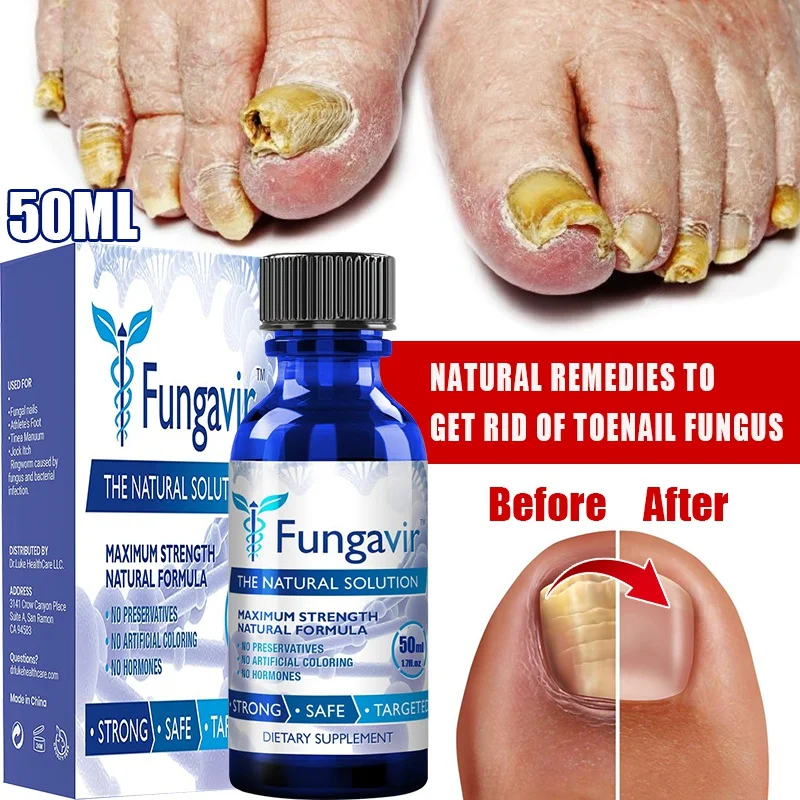
Fungal infection of the nails takes quite a long time , therefore, the earlier the disease is detected, the higher the probability of its complete cure. In addition, an earlier start of therapy makes it possible to limit the use of only external preparations and nail cleanings, and this is possible only if the infection has affected single nails from the distal or lateral edges by less than 1/3-1/2 of the plate. Topical external therapy is used in the treatment of the initial stages of a fungal infection of the nails. Advanced forms of fungal infection require longer and more expensive treatment. A special role in the early detection of nail mycoses is played by periodic preventive examinations and clinical examination of the population.
Consequences
Such a seemingly harmless disease can have very serious complications:
- damage to smooth skin and the addition of a secondary infection;
- fungal sensitization with the formation of allergic reactions and foci of microbial eczema;
- complication of the course of chronic dermatoses, varicose veins of the lower extremities and foot lesions in diabetes mellitus, etc.

It is impossible not to mention the epidemiological significance of the existing foci of fungal infection: a sick person will infect public places and other people, and in everyday life – be a source of family transmission of a fungal infection.
Useful advice from Dr.
Prevention of nail fungus or how to avoid getting a fungal infection
Have individual accessories: shoes, slippers, washcloth, pumice stone, foot towel and manicure set.
After use, wash the bathtub and shower cabin with powder (chlorine-containing) and a rag.
Manicure scissors are disinfected by immersing in alcohol and then burning over a burner flame.
After contact with surfaces and objects potentially infected with a fungus (beaches, baths, swimming pools, gyms, other people’s shoes, sports equipment, etc.), it is recommended to treat the feet with a spray (for example, MYCOSTOP).

Case study
At the beginning of November 2017, a man born in 1955 applied with complaints of changes in the nails of both feet and the right hand. I first noticed changes in my toenails over 10 years ago. He did not apply for treatment, the work is connected with business trips, nothing hurt, the cosmetic defect did not particularly bother him. At the moment, he turned already with the defeat of all the nails on the right hand.
On examination, a total lesion of all nail plates on the right hand and both feet was found. Nail plates were taken for analysis for pathogenic fungi. Concomitant diseases: arterial hypertension and obesity. The result of the analysis: spores of pathogenic fungi and mycelium filaments were detected. The patient did not believe in the possibility of recovery. After a biochemical blood test (indicators are normal), systemic antifungal drugs were prescribed according to the pulse therapy scheme and local treatment on the nail plates, according to clinical recommendations.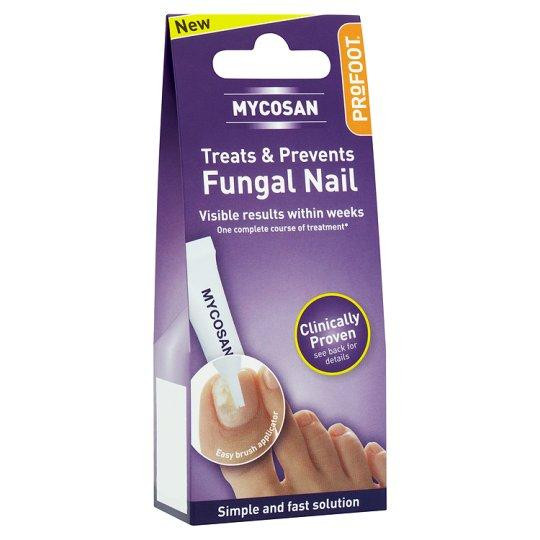
Conducted 4 courses of pulse therapy with systemic antimycotics, after each – control of the biochemical blood test.
The final control examination in March 2018: the nail plates on the right hand recovered completely. On the feet, there is a growth of healthy nail plates by 50% (on average, the nail plate on the feet grows completely in 10-12 months). Dynamics is positive.
BE HEALTHY!
If you are concerned about the condition of your nails, do not delay treatment, sign up for a consultation with experienced specialists of our clinic by calling the contact center in Moscow +7 (495) 775 75 66, or via the Internet in the online form
Return to the list of publications
Services
- Demodex analysis
- Dermatologist-oncologist
- Dermatologist
- Calling a dermatologist at home
- Calling a pediatric dermatologist at home
- Toenail fungus in a child
- Dermoscopy of moles
- Facial cryotherapy
- Laser removal of keratomas
- Laser removal of neoplasms
- Treatment of allergic dermatitis
- Treatment of allergic dermatosis
- Treatment of atopic dermatitis
- Treatment of warts in children
- Treatment of varicose eczema
- Treatment of vitiligo in children
- Treatment of herpes in children
- Treatment of demodicosis
- Treatment of dyshidrotic eczema
- Treatment and prevention of hair loss
- Treatment of lichen planus
- Treatment of mycoses
- Treatment of pityriasis versicolor
- Treatment of papillomas
- Treatment of flat warts
- Treatment of psoriasis
- Rosacea treatment
- Treatment of seborrheic dermatitis
- Treatment of seborrheic dermatitis in children
- Scabies treatment
- eczema treatment
- Treatment of eczema in children
- Mycosis of the skin, hands and feet
- Pityriasis versicolor in children
- Plantar warts in children
- Scabies
- seborrheic eczema
- Wart removal
- Nitrogen Wart Removal
- Laser wart removal
- Removal of warts in children
- Removal of keratoma with nitrogen
- Removal of keratoma
- Molluscum contagiosum removal
- Removal of genital warts
- Removal of plantar warts
- Laser mole removal
- Removal of moles in children
- Removal of moles surgically
- Facial phototherapy
Prevention of toenail fungus, feet: drugs, spray, ointments
Contents
- Effective primary prevention of fungal infection
- Effective secondary prevention
- Prevention at home
- During and after a visit to the bath
- After a pedicure 9000 4
- In children
- Effective prophylaxis of infected sites
- Drug prophylaxis
- Folk recipes for treatment and prevention
Fungus is the scourge of our time.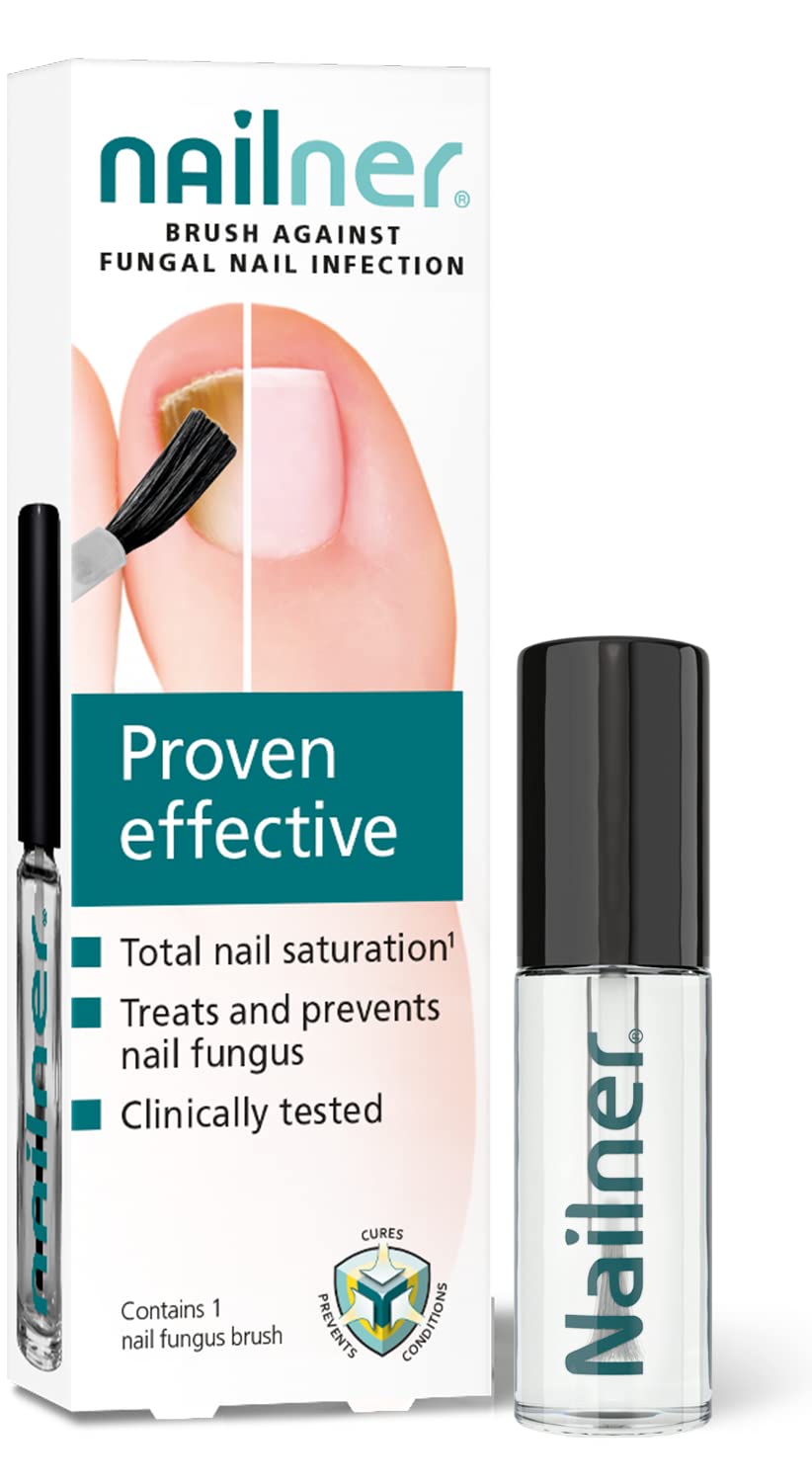 Sitting in offices for a long time in tight and uncomfortable shoes, trying to follow fashion, we do not ventilate our feet. In the evening, coming home, barely taking off our shoes, we faint from the smell of feet and socks. Then we wonder where the attack came from? It does not appear from the air, it is an infection that manifests itself under certain factors. By following the simple rules of prevention, do not be afraid of the appearance of toenail fungus.
Sitting in offices for a long time in tight and uncomfortable shoes, trying to follow fashion, we do not ventilate our feet. In the evening, coming home, barely taking off our shoes, we faint from the smell of feet and socks. Then we wonder where the attack came from? It does not appear from the air, it is an infection that manifests itself under certain factors. By following the simple rules of prevention, do not be afraid of the appearance of toenail fungus.
Effective primary prevention of fungal infection
People become infected with fungus while on vacation in public places. Mycoses are outside the body of a potential carrier for a long time. Infection comes when one simply walked on the floor of a public bath, which an infected person walked on. Prevention of toenail fungus includes a set of rules:
- When visiting public places – baths, saunas, beaches, take slippers or flip flops with you. When you get home, wash your feet with soap and treat with antifungal agents.
 The fungus multiplies in a warm and humid environment, to avoid this, ventilate your feet more often. Follow these rules to protect your feet from the formation of nail fungus.
The fungus multiplies in a warm and humid environment, to avoid this, ventilate your feet more often. Follow these rules to protect your feet from the formation of nail fungus. - Cotton material absorbs excess moisture, which leads to sweaty feet. The damp conditions created by wearing uncomfortable and tight shoes all the time create a habitat for a fungal infection. So ventilate your feet! If this is difficult to do, wear open-toed shoes and bring spare socks.
- Keep your feet dry. Put in a lot of work to remove excess moisture from your shoes and change your socks.
- When buying shoes in boutiques, use disposable socks for trying on.
- Do not share personal hygiene products with an infected person. The family should have their own slippers, washcloths, towels, etc. separately.
- Trim your toenails, use a nail file. If there are signs of infection, apply hygienic varnish.
Effective secondary prevention
The purpose of secondary prevention is to prevent recurrence in people treated with antifungals.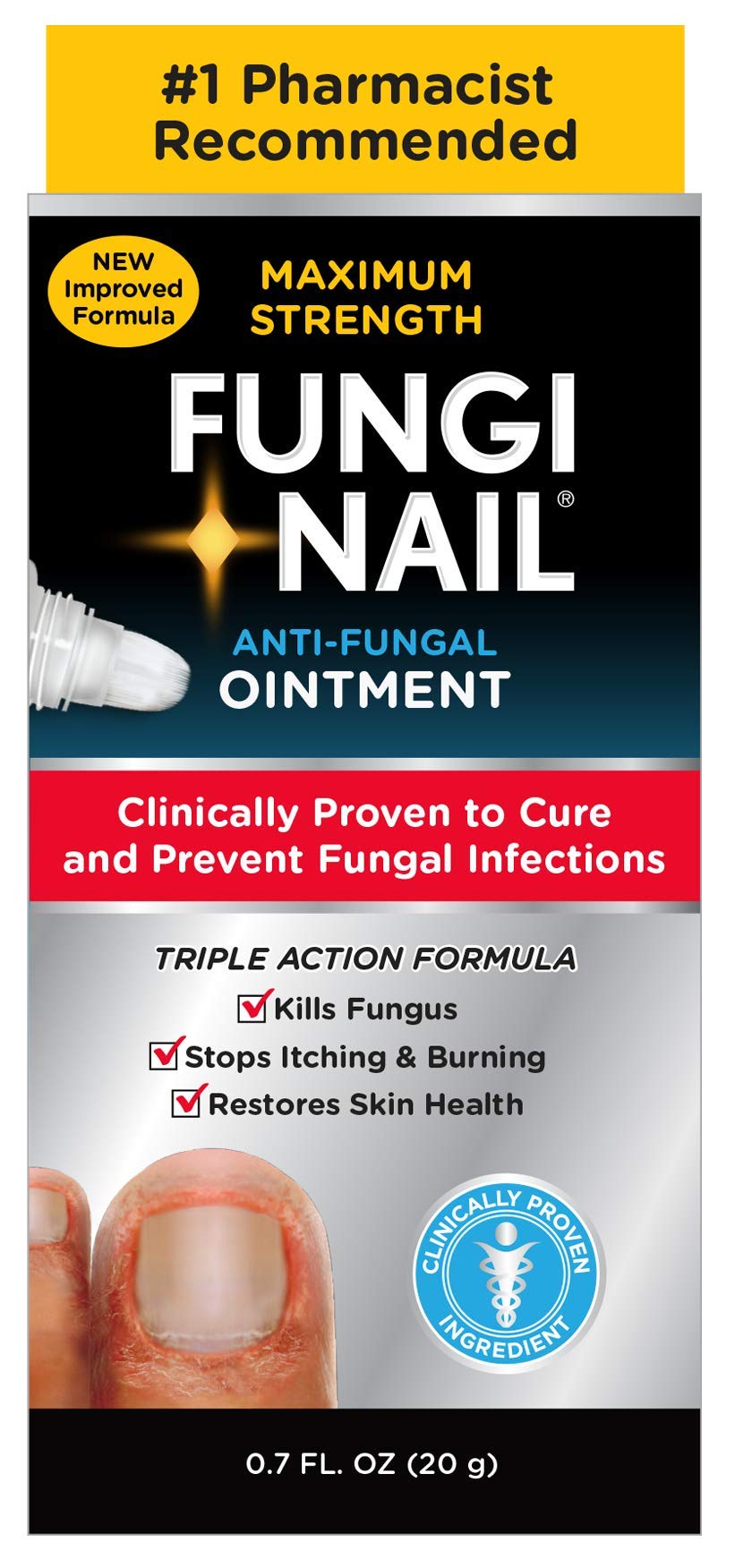 Secondary prevention of toenail fungus is as follows:
Secondary prevention of toenail fungus is as follows:
- Maintain hygiene. Wash feet with soap and dry with a towel. Do not expose your family to infections, you need to have your own slippers with ventilation and wash your socks in a special solution. Already infected socks should be destroyed.
- Taking an antifungal agent for prophylaxis after treatment. Dermatologists advise using a local antimycotic agent for another three months after drug therapy.
- Mandatory disinfection of shoes that were previously in use to kill the fungus and spores inside them.
- Increase immunity, lead a healthy lifestyle. Buy an immune booster at drugstores.
Home Prevention
Keeping toenail fungus at bay does not require much effort, just follow the simple prevention guidelines. In this case, medications may not be needed.
All personal care items must be yours and not be used by anyone.
During and after a visit to the sauna
A visit to places such as public baths, swimming pools, showers and beaches obliges you to focus on the prevention of toenail fungus. Here, children are at risk due to weak immunity and frequent visits to such places.
In rooms where you are allowed to wear slippers, wear them. For these purposes, rubber flip flops or slippers are suitable so that they do not fall apart when in contact with water. After visiting such places, it is imperative to wash your feet with soap and disinfect them with protective agents.
After a pedicure
People can become infected during pedicures on hands and feet by dubious artists. So that a trip to a beauty salon does not turn into horror, before visiting you need to focus on such nuances: a certified salon, a qualified manicurist has experience in this work.
All tools must be disposable and opened in the direct presence of the visitor. And not one-time ones must undergo steam processing, otherwise such a tool should absolutely not be allowed to work.
Adhering to these rules, after a pedicure, nail fungus on the hands is not terrible. It is worth abandoning the procedure if traces of infection are visible, in which case everything will only get worse.
In children
In fact, children are more prone to fungal diseases than adults, due to the formation of immunity. It is necessary to regularly monitor that children perform hygiene procedures, weaken immunity, and promote a healthy diet.
Cut your children’s nails, see what condition they are in. Usually they do not focus on the aesthetics of their feet, and therefore you must prevent the development of foot and foot fungus in a child.
Effective prevention of infected areas
Prevention of interdigital fungus consists of several rules:
- Elimination of the causes that favor the formation of nail fungus;
- Application of antiphlogistic ointment;
- Use of antimycotic drugs.
The doctor will not immediately determine in what quantities to use antimycotic tablets, what methods of treatment should be applied. The question will be answered by the examination of the patient by specialists.
The question will be answered by the examination of the patient by specialists.
In order to choose a good therapy for foot fungus, you need to determine the diagnosis and find the cause of the infection. Treating the disease at home is almost unrealistic. Today, a great love for traditional medicine is an important factor in the spread of the disease. Many, visiting a doctor, observe remission, quit treatment. And the disease returns, which must be started anew.
When choosing the best treatment options for toe fungus, you may be faced with a huge number of drugs. Many of them have an effective antifungal effect and fight nail fungus well and help restore the aesthetic appearance of the legs.
Medication prophylaxis
After the appearance of signs of illness in a relative, hygiene and drug prophylaxis should be carried out. It is necessary to treat the toenails, for this a specific cream and ointment is suitable, to spread the skin, to reduce the risk of infection. When sharing shoes or slippers with an infected family member, disinfect immediately using a spray.
When sharing shoes or slippers with an infected family member, disinfect immediately using a spray.
Some of the popular drugs:
- Mycozoral – this drug is recommended for people with weak immunity.
- Mycostop – This drug is recommended for use after visiting public places or using shoes with an infected person.
- Loceryl – this drug in the form of varnish, effectively counteracts fungal infections on the nails.
- Salicylic ointment is an effective treatment for the initial stages of foot and nail fungus.
When using these tools, you must read the instructions. Do not forget about contraindications. If the drug is not suitable for intolerance, it should be discarded. Before using the ointment, you should consult a doctor and this is very important. There is no need to discard the option of prophylaxis with vitamins from groups B and C to boost immunity.
Traditional recipes for treatment and prevention
If you notice symptoms of nail fungus infection, contact your doctor for advice..jpg) Some remedies prescribed by a doctor can be used with folk methods. They cannot replace the course of therapy prescribed by the doctor – this will prolong the treatment.
Some remedies prescribed by a doctor can be used with folk methods. They cannot replace the course of therapy prescribed by the doctor – this will prolong the treatment.
These remedies are made at home, which is why they are called folk remedies. The most popular recipes:
- Propolis;
- Apple cider vinegar;
- Iodine;
- Tea tree oil.
Mix the ingredients, apply 3 drops to the infected areas. It is not recommended to practice more than 8 times a month.
Other folk recipes:
- 9% table vinegar. 3-4 drops on a cotton swab and fix it with adhesive plaster on your finger, wrap it with a plastic bag, leave the bandage until the morning.
- Sea salt. A natural antiseptic, a variety of healing baths are prepared with it. The bath is made like this, take 20 g of salt and warm water, soak the feet with water for 15 minutes, then wipe them dry.
- Iodine. Has a fungicidal effect. If there is a suspicion of infection, apply a solution of iodine to the nail with cotton wool.
 Make a bath: take a basin of water and add a certain amount of iodine, soar the feet in this composition.
Make a bath: take a basin of water and add a certain amount of iodine, soar the feet in this composition. - Soda. It replaces sea salt, the method of preparation with a bath is the same. Soar the feet for 15 minutes and wipe them dry.
- Fukortsin. Similar in effect to iodine. Just apply to the nail with cotton.
There are a huge number of recipes, but the above remedies are proven and especially effective. Using these drugs, you need to wash your feet, steam, cut your nails.
A healthy diet and daily routine are important for prevention. The food should include a variety of vitamins, lots of vegetables and fresh fruits. So that the immune system can easily fight the infection, it is recommended to sleep at least 8 hours a day. Under these conditions, prevention will bear fruit and help prevent infection.
Fungal infection is one of the diseases known in the modern world and it is easy to get infected, the treatment is difficult. Infection occurs both from the host and from the environment.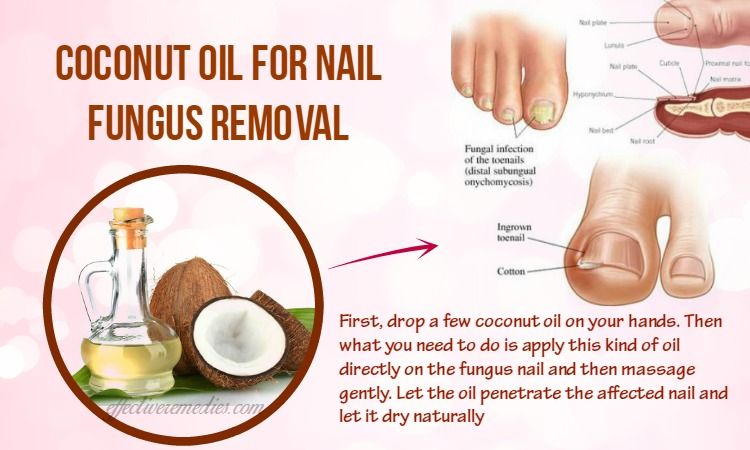



 The fungus multiplies in a warm and humid environment, to avoid this, ventilate your feet more often. Follow these rules to protect your feet from the formation of nail fungus.
The fungus multiplies in a warm and humid environment, to avoid this, ventilate your feet more often. Follow these rules to protect your feet from the formation of nail fungus. Make a bath: take a basin of water and add a certain amount of iodine, soar the feet in this composition.
Make a bath: take a basin of water and add a certain amount of iodine, soar the feet in this composition.